Properties of Prisms:
- Base: The polygon at the bottom and top of the prism.
- Height: The perpendicular distance between the bases.
- Lateral Faces: The rectangular or parallelogram-shaped sides of the prism.
- Volume: The amount of space inside the prism, given by the formula: Volume = Base Area x Height.
- Surface Area: The total area of all the faces of the prism, given by the formula: Surface Area = 2(Base Area) + (Perimeter of Base x Height).
Types of Prisms:
There are different types of prisms based on the shape of their bases, including rectangular prisms, triangular prisms, pentagonal prisms, hexagonal prisms, etc.
Applications of Prisms:
Prisms are widely used in architecture, engineering, and optics. They are used in the design of buildings, bridges, eyeglasses, cameras, and other optical instruments.
Study Guide:
When studying prisms, it's important to focus on the following key concepts:
- Understanding the properties of prisms, including the base, height, lateral faces, volume, and surface area.
- Identifying different types of prisms based on the shape of their bases.
- Applying the formulas for calculating the volume and surface area of prisms.
- Recognizing real-world applications of prisms in various fields.
Practice exercises involving different types of prisms and their calculations can help reinforce understanding of the topic.
.◂Biology Worksheets and Study Guides High School. Introduction to animals
Worksheet/Answer key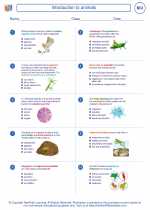 Introduction to animals
Introduction to animals  Worksheet/Answer key
Worksheet/Answer key Introduction to animals
Introduction to animals  Worksheet/Answer key
Worksheet/Answer key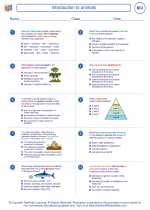 Introduction to animals
Introduction to animals  Worksheet/Answer key
Worksheet/Answer key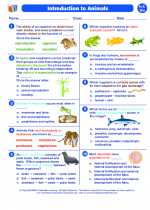 Introduction to animals
Introduction to animals  Vocabulary/Answer key
Vocabulary/Answer key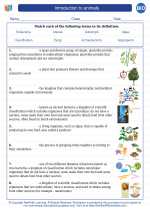 Introduction to animals
Introduction to animals  Vocabulary/Answer key
Vocabulary/Answer key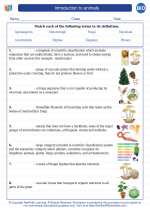 Introduction to animals
Introduction to animals  Vocabulary/Answer key
Vocabulary/Answer key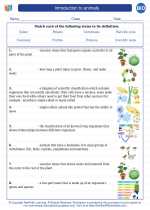 Introduction to animals
Introduction to animals 

 Worksheet/Answer key
Worksheet/Answer key
 Worksheet/Answer key
Worksheet/Answer key
 Worksheet/Answer key
Worksheet/Answer key
 Vocabulary/Answer key
Vocabulary/Answer key
 Vocabulary/Answer key
Vocabulary/Answer key
 Vocabulary/Answer key
Vocabulary/Answer key

The resources above cover the following skills:
Concepts of Life Science (SC1, SC2, SC3)
The student demonstrates an understanding of the structure, function, behavior, development, life cycles, and diversity of living organisms by describing the structure-function relationship